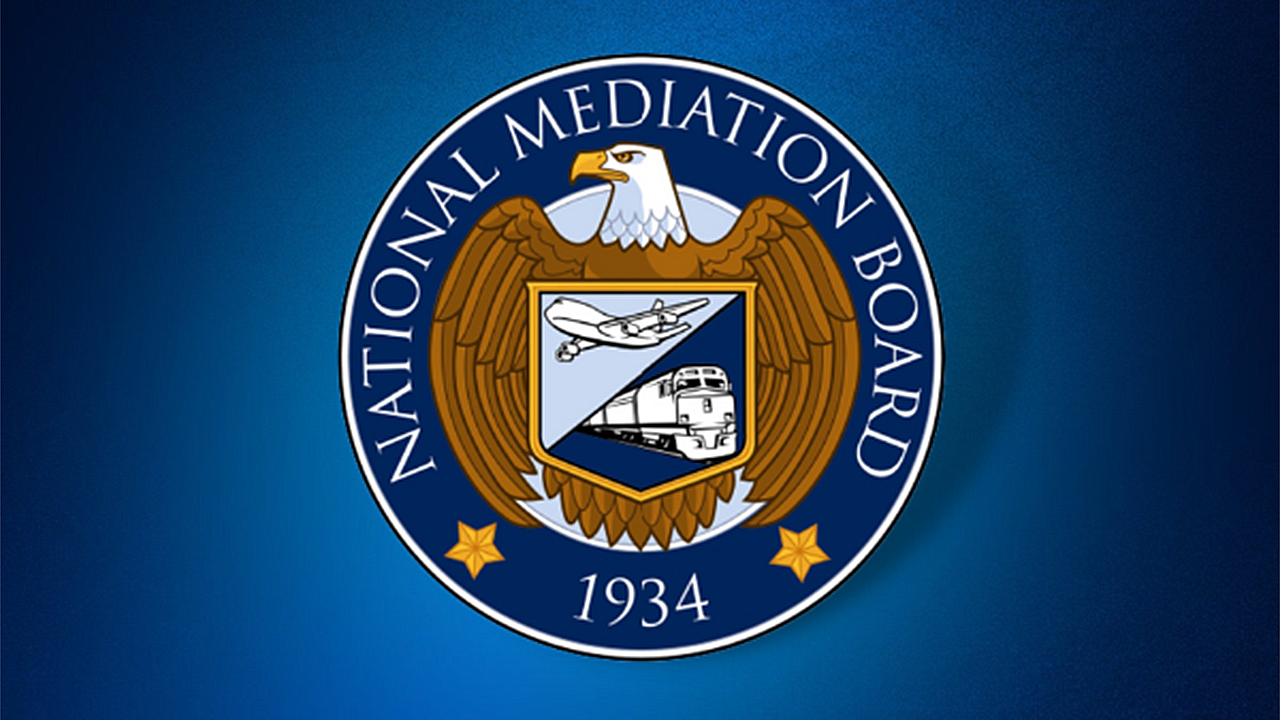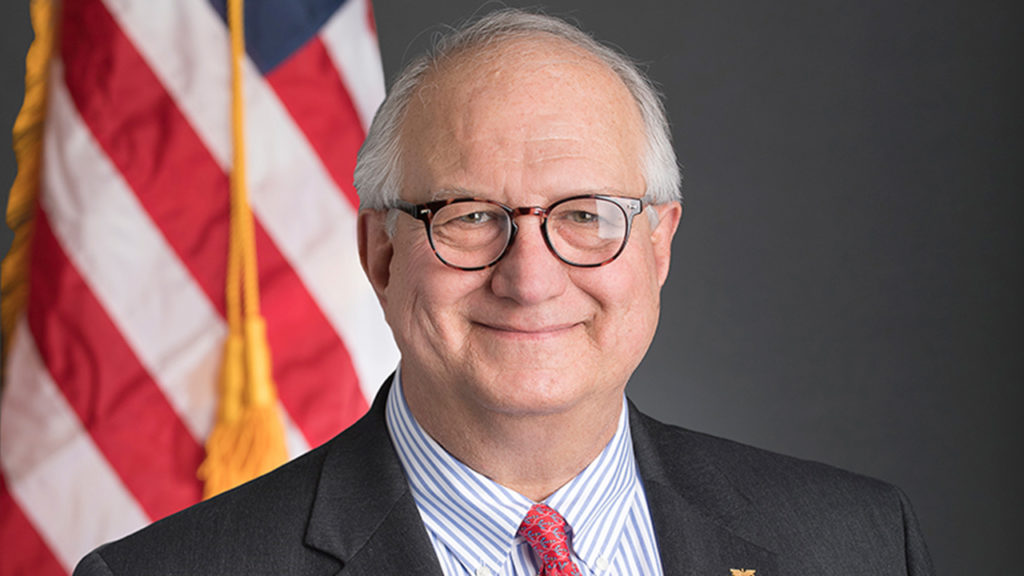
NMB Starts Clock Toward Rail Shutdown
Written by Frank N. Wilner, Capitol Hill Contributing Editor
The National Mediation Board (NMB) on June 14 set in motion a ticking time bomb toward an economy-jolting national railroad shutdown within 90 days, its two Democratic members agreeing with rail labor—and over the remonstrance of carriers and the NMB’s lone Republican—that a voluntary agreement to amend unionized rail worker wages, benefits and work rules is not within reach.
Negotiations, dating to January 2020, involve 12 rail craft unions (bargaining in two coalitions collectively representing some 115,000 rail workers), most Class I freight railroads and many smaller ones. Management is represented by the National Carriers Conference Committee (NCCC). CSX is negotiating separately with two unions, representing train and engine workers, over wages and work rules (not benefits). Canadian Pacific negotiates separately with all its U.S. unions.
Although negotiations toward amending existing contracts began in January 2020, the COVID-19 pandemic delayed face-to-face collective bargaining, with early sessions conducted electronically. As contracts negotiated under provisions of the Railway Labor Act (RLA) never expire—amendments are retroactive to the start of negotiations—there is no bright line date to reach voluntary settlements.
In fact, it was only in January 2022—two years following the start of negotiations—that labor’s Coordinated Bargaining Coalition (CBC), consisting of 10 of the 12 unions bargaining, sought NMB mediation assistance, with mediation not beginning until March. This NMB release from mediation is thus one of the shortest, if not the shortest, on record.

One of the NMB’s two Democrats, Linda Puchala, is a former President of the Association of Flight Attendants, while the second Democrat, Deirdre Hamilton, is a former Teamsters Union attorney. The CBC’s lead negotiator is Dennis Pierce, President of the Brotherhood of Locomotive Engineers and Trainmen, which is affiliated with the Teamsters. The NMB’s Republican member is Gerald W. Fauth III, a former STB Chief of Staff and long-time rail shipper consultant. He voted against the hasty release.
Also unprecedented is a release from mediation in an election year, setting up a possible nationwide rail shutdown just weeks prior to November congressional elections. As Congress traditionally acts to end national rail shutdowns through legislation imposing a third-party settlement of wage, benefits and work rules disputes, lawmakers are loathe to cast what are politically problematic votes just ahead of constituents heading to the polls.
Speculation is that rail labor seeks to throw the dispute before Congress while traditionally labor-friendly Democrats still control the House and Senate. Labor’s two coalitions, speaking for all 12 unions, said in a statement, “We are urging our members to begin reaching out to their U.S. senators and House Representatives to voice their support for a labor-friendly PEB, and if necessary, labor-friendly legislation to bring this round of bargaining to a successful conclusion. The time to make our collective voices heard is now!” That is a risky strategy.
In 1991, a rail union—in a non-election year—played its political card before a Democratic-controlled Congress and lost badly. The late Sen. Ted Kennedy (D-Mass.), traditionally a staunch labor ally, voted with the majority against labor’s interests, calling his vote “good for business, good for the economy and good for the nation.” In the House, all Democrats on the House Railroad Subcommittee voted against labor interests, with the carrier-favorable bill passing on the House floor, 400-5. One rail labor leader called the result “disastrous.” There has not been a national rail shutdown, flowing from failed wage, benefits and work rules negotiations, since.
Former NMB member Harry R. Hoglander, a Democrat, wrote in 2009 of NMB “clout and muscle [that] forced many a reluctant, uncompromising participant into accepting compromise.” In this case, the NMB seems to have abandoned its clout and muscle.
WHAT NEXT
While the NMB’s decision to release the parties from mediation comes with a proffer of binding arbitration, the proffer, under provisions of the RLA, must be accepted by both sides, with history suggesting mutual agreement will not occur. Indeed, were the parties so inclined, they could have agreed to binding arbitration while in mediation.

In fact, in a February 2022 published statement, labor’s CBC indicated labor would reject a proffer, calling it “the next step in the process towards self-help.” Additionally, CBC lead negotiator Pierce was separately quoted in May that labor would reject a proffer.
“Because binding arbitration inherently means that rank and file union members will not have the option to vote on their contract—which is their constitutionally mandated right—rail labor will reject the offer of binding arbitration,” Transportation Trades Department, AFL-CIO President Greg Regan said in a June 14 statement on behalf of TTD’s 37 affiliated unions, including all of rail labor.
Should, however, a proffer of arbitration be accepted by both parties, the RLA contemplates three- and six-member arbitration panels—the former being the default and the latter being available by stipulation of the parties. Three member panels consist of one arbitrator chosen by labor, one by management and a third chosen by the other two arbitrators. If the two cannot agree, the NMB chooses the third. Six member panels are similarly chosen.
If the proffer is rejected by either labor or management, the first of three maximum 30-day cooling off periods begins. At any time during this first 30-day period, President Biden may appoint a Presidential Emergency Board (PEB), consisting of experienced labor arbitrators, to investigate and make non-binding recommendations for settlement. Typically—but not always—the choices come from a list provided by the NMB.
While the decision by the White House to name a PEB is voluntary under the RLA, it is fully expected that a PEB will be named. If not, labor may strike or carriers may lock out, precipitating the national rail shutdown. The nation’s rail network is so interdependent that even a selective strike against one Class I railroad almost certainly will bring down the others—operationally or in sympathy.
It is expected that a PEB will be appointed before the end of the first 30-day cooling off period that begins June 17.
Once appointed, a second maximum 30-day clock begins ticking while the PEB hears evidence from both parties and issues its non-binding recommendations. The third 30-day clock then begins ticking, during which the parties review PEB recommendations and make a final effort toward a voluntary settlement. If not, the RLA has run its course. Either side may take so-called “self-help,” meaning a strike or lockout.
While the RLA does not provide for congressional involvement, freight railroads are deemed so essential to the economy and national defense that Congress immediately moves to resolve the dispute. As Congress is not a very creative body, it is expected it will use the PEB recommendations to craft back-to-work legislation.
Congress may also be angry at having to be involved in a labor-management dispute just weeks before elections. Indeed, in the Senate, a single senator, in a fit of pique, may launch a filibuster that extends the rail shutdown.
As former arbitrator and Democrat Robert O. Harris said in 1991, when rail labor took both a PEB and congressional punch to the gut, “Welcome to the oldest established craps game in Washington. Like the suckers in Guys and Dolls, you are risking your futures on the roll of the dice [when you fail to make a voluntary agreement].”
The NCCC responded to the NMB release that “it remains in the best interests of all parties—and the public—to settle this dispute, provide for prompt pay increases for all rail employees, and prevent rail service disruptions. The NCCC remains willing and available to negotiate at any time over mutually acceptable terms.”
Additionally, the NCCC said it will demonstrate “to the expected PEB how the railroads’ proposals appropriately reward rail employees’ hard work and skills while best positioning the industry to grow and compete for traffic in the nation’s highly competitive freight marketplace.”
EDITOR’S NOTE: The unions comprising the Coordinated Bargaining Coalition (CBC) are: the American Train Dispatchers Association; Brotherhood of Locomotive Engineers and Trainmen (BLET); Brotherhood of Railroad Signalmen; International Association of Machinists; International Brotherhood of Boilermakers; National Conference of Firemen & Oilers; International Brotherhood of Electrical Workers; Transport Workers; Transportation Communications Union; and Transportation Division of the International Association of Sheet Metal, Air, Rail, and Transportation Workers (SMART-TD).
Negotiating as a separate coalition are the Mechanical Division of International Association of Sheet Metal, Air, Rail and Transportation Workers and Brotherhood of Maintenance of Way Employes.
CSX is negotiating separately with BLET and SMART-TD.
Railway Age Capitol Hill Contributing Editor Frank N. Wilner is author of “Understanding the Railway Labor Act,” published by Railway Age sister company Simmons-Boardman Books in Omaha, Neb.



